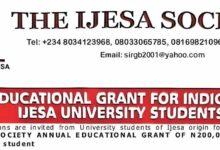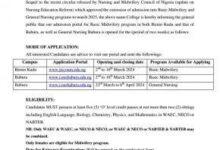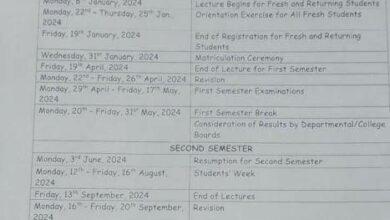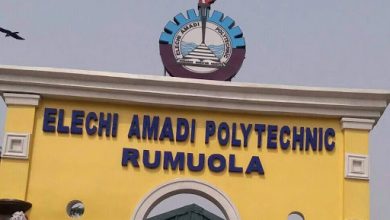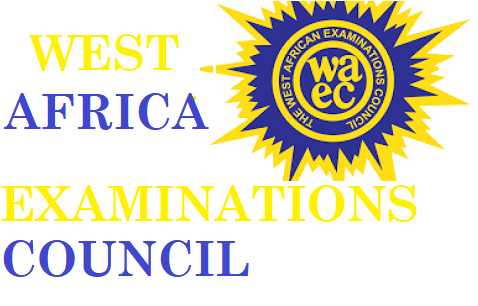
WAEC Syllabus for Photography
WAEC Syllabus for Photography. WAEC Syllabus for Photography is available for all candidates who want to participate in the examination. The West African examination council (WAEC) has officially introduced a syllabus that will guide all the WAEC candidates who wish to write the WAEC examination this year. For a very successful WAEC Photography examination for this year, you need to check out the available areas of concentration. It has been divided into sections with chapters, followed by the topics to be covered in preparation for the exams. In the WAEC Syllabus for Photography, you will also see the format of how the WAEC Photography questions will be presented. Jamb form
There are 3 sections to answer questions from. Paper 1 is Objective and paper 2 contains essay questions and paper 3 is Photo Analysis and Processes. Where paper one (1) carries 1 hour for 40 marks; paper two (2) carries 2 hours for 60 marks (3) 3 hours for 100 marks.
👉 Relocate to Canada Today!
Live, Study and Work in Canada. No Payment is Required! Hurry Now click here to Apply >> Immigrate to Canada
This WAEC syllabus is for both the O’level WAEC and General Certificate Examination (GCE) candidates. Final year students in the senior secondary school level and external candidates are eligible to make use of this syllabus and prepare ahead of the examination. WAEC Syllabus for Photography
See the full detailed information concerning the WAEC Photography Syllabus below.
PREAMBLE
The syllabus is designed to assess candidates’ knowledge of photography as a visual means of communication, as well as their skill in the creative utilization of photographic equipment. It is also meant to evaluate their knowledge of the socio-economic potentials of photography. Pounds to Naira
OBTECTIVES
Candidates will be tested on their ability to understand the:
- meaning and importance of photography as a medium of visual communication.
- evolution of photography and its historical development in Nigeria.
- scope of photography and its associated terminologies.
- knowledge of photographic equipment and their uses.
- skills in taking, processing, presenting and preserving photographs.
- use of digital technology in photography.
SCHEME OF EXAMINATION
There will be three Papers, 1, 2 and 3, all of which must be taken.
👉 Relocate to Canada Today!
Live, Study and Work in Canada. No Payment is Required! Hurry Now click here to Apply >> Immigrate to CanadaPapers 1 & 2 will be a composite paper to be taken in 3 hours.
Paper 1: will consist of 40 (forty) multiple-choice (objective) questions to be answered in 1 hour for 40 marks;
Paper 2: will consist of 6 (six) essay questions from which candidates are expected to answer 4 (four) in 2 hours for 60 marks. The two papers will focus on topics such as introduction to photography, importance of photography, the theory of light, photographic equipment and their uses, history and appreciation of photography. Other topics to be covered in the papers are photographic terminologies, digital photography, care and preservation of photographs as well as the procedures involved in organising photo exhibition.
Paper 3: will consist of two Sections A & B in which 5 (five) questions will be on Photo Analysis and Processes / Equipment and candidates will be expected to answer 4 (four) of the questions in 3 hours for 100 marks.
Section A will comprise 2 (two) compulsory questions on analysis of photographic images.
Section B will comprise of 3 (three) questions on processes and equipment out of which candidates will be expected to answer 2 (two).
Photo Analysis and Processes
This is an alternative to practical paper that seeks to evaluate candidates’ level of skills in photography. It will also measure their knowledge of photographic equipment and their uses, as well as the processes involved in different aspects of photography. The paper will carry 100 marks and will last for 2 hours.
Section A:
Photo Analysis: – This shall focus on analysis of photographic images, and it is aimed at measuring candidates’ level of understanding of the dynamics of photography. Two (black and white) photographs will be provided for analysis and candidates are expected to examine the two photographs and respond to the questions on it for 50 marks. Jamb Result
Section B:
Processes / Equipment: – This Section shall contain three constrained questions, and candidates are to answer all for 50 marks. The questions shall be on the various processes involved in photography, as well as photographic equipment and their uses.
DETAILED SYLLABUS
- INTRODUCTION TO PHOTOGRAPHY
- Meaning of photography
- Functions / uses of photography
(i) Record events
(ii) Visual communication e.g. advertising, journalism, scientific, artistic expression etc.
- Branches / Areas of Photography
- Fashion
- Advertising
- Photojournalism (Documentary, Photo-Essay etc.)
- Forensic
- Nature
- Underwater
- Sports
- Architectural
- Events (Wedding, Birthday etc.)
- Portraiture
- Still Life etc.
- HISTORY OF PHOTOGRAPHY
- Origin of Camera and Photography
- Development of Photography in Nigeria
- Pioneers of Photography:
(i) Europe & America – Nicephore Niepce, Louis Daguerre, Williams Fox Talbot, Edwin Land, George Eastman e.t.c.
(ii) Nigeria – Jonathan Adagogo Green, Dotun
Okubanjo, J.D. Okhai Ojeikere, Sunmi Smart Cole, Philip Trimmnel, Peter Obe, Goerge Oshodi, Andrew Esiebo, Kelechi Amadi-obi, Akintunde Akinleye, George Dacosta. etc.
- TERMINOLOGIES IN PHOTOGRAPHY
- Exposure
- Develop
- Enlarge
- Focus
- Aperture (F – Number)
- Shutter Speed
- Perspective
- Image
- Intensity
- Light
- etc.
- LIGHT IN PHOTOGRAPHY
- Source of light
(i) Natural e.g. Sun and Moon.
(ii) Artificial e.g. Flash, Studio lighting.
- Properties of light
(i) Absorption
(ii) Reflection
(iii) Transmission
(iv) Refraction
(v) Dispersion
- THE CAMERA
- Principles underlying the design of Camera (Pinhole Camera)
(i) Light tight – (insulation from unwanted light).
(ii) Light inlet – (opening for wanted light).
(iii) Viewing system.
(iv) Image formation.
- Basic Part of an SLR / 35mm Camera and their functions.
- Categories and Types of Camera.
- (i) Categories – Analogue and Digital.
(ii) Types
- Compact
- Range Finder
- Single Lens Reflex (SLR) / 35mm
- Medium Format – Twin Lens and SLR
- Large Format Camera
- Instamatic
- Lenses
(i) Principles of Lenses: Refraction, Reflection, Dispersion, Diffraction.
(ii) Difference between Concave (negative) and Convex (positive) lenses.
(iii) Focal length (normal, short and long).
(iv) Relationship between lens and apertures.
(v) Types of Camera lenses – Normal / Standard, Wide angle, Telephoto and Zoom.
(vi) Uses of Camera lenses.
- Maintenance of Camera
- Keep away from dirt and oil
- Protect lens from dust
- Use of Camera strap
- Careful handling etc.
- FILM
- The nature of film – Light Sensitive and Chemical Composition.
- Types and Format
(i) Types
- Black and White
- Colour Npower Recruitment
(ii) Format
- 110
- 35mm
- 120 / 220
- Sheet film
- Film Speed (ISO)
- Meaning
- Examples – ASA 32 – 125 (Slow Speed) Dollar to Naira Rate
ASA 40 – 200 (Medium Speed)
ASA 400 and above (Fast Speed)
- TAKING OF PHOTOGRAPHS
(1) Processes involved
- Preparation
- Loading film
- Setting the camera
- Prepare Subject
- Set up lighting Equipment (Studio)
- Study outdoor weather Condition (Outdoor)
- Setting appropriate aperture/shutter combination
- Taking Photograph
- Handling the camera
- composing
- Focusing
- Shooting
(2) Composition
(a) Meaning
(b) Elements of Composition
(Line, Shape, Space, colour, angle, centre of interest, background, closeness, form, texture etc.)
- THE DARK ROOM / FILM DEVELOPMENT
- Layout and Requirements
(i) Layout – dry and wet areas
(ii) Requirements
- Light tights
- Good ventilation (Air conditioner)
- Water
- Waste outlet
- Flat working surfaces
- Tools and Equipment
- Measures
- Containers
- Funnels
- Thermometers
- Timers
- Developing Tanks
- Safe Light
- Enlarger
- Dryer
- Developing Trays / Dishes
- Spiral Spool
- Light Box etc.
(c) Chemicals – Developer, Fixers, Stop bath
(d) Film Development Processes
(i) Dilution of developer
(ii) Loading of the film into the tank or see-saw method
(iii) Pouring and timing the action of developer in the tank
(iv) Rinsing with water / Stop bath
(v) Fixing of film
(vi) Pouring out of Fixer and rinsing with water / Stop bath
(vii) Drying of negative
(e) Safety Measures
- Apron / Lab Coat
- Rubber Gloves
- Avoid sudden movement
- First aid (for chemical burns)
- Proper Storage of Chemical
- PRINTING OF PHOTOGRAPHS
- Materials and Equipment
- Enlarger
- Safe light
- Printing Paper
- Printing Frame
- Developer and Fixer
- Developing Trays / Dishes
- Dryer
- Guillotine / Trimmer
- Printing Process
(i) Dilution of developer and fixer
(ii) Printing of Photograph (using enlarger)
(iii) Production of Contact Print
(iv) Selection of exposure for printing
(v) Exposure on paper
(vi) Developing
(vii) Rinsing with water or Stop bath
(viii) Fixing
(ix) Rinsing with water or Stop bath
- Drying and Storage of Photographs
(i) Methods of Drying
- Dryer
- Open air
(ii) Methods of Storing
Negatives – Printing Paper Pack and Cellophane Jackets
Photographs – Photo Albums and Mounting on Photo Frame
Chemicals – Jerry Can (preferably black)
- DIGITAL PHOTOGRAPHY
- Differences and similarities between traditional (analogue) and digital photography.
- The development of digital photography.
- Equipment for Digital Photography
(i) Digital Camera
(ii) Computer
(iii) Printer
- Software for Digital Photography
- Adobe Photoshop
- PhotoEditor
- Photopaint
- Fireworks
- Picasa etc.
- Input / Output Methods and Devices
(i) Input Devices
- Scanner
- Digital Camera
- Compact Disc
- Flash Drive
(ii) Output Devices
- Printer
- Computer monitor
- Internet
- EXHIBITION OF PHOTOGRAPHS
Procedure
- Mounting and framing.
- Space acquisition
- Publicity
- Display of photograph.
SUGGESTED READING LIST
| S/N | AUTHOR | TITLE |
| 1.
2. |
London, B. & J. Stone
Otunla, A.O. |
A Short Course in Photography, an Introduction to Black-and-White Photographic Technique, Third Edition. New York: HarperCollins Publishers, Inc., 1996.
Fundamentals of Photographic Production and Techniques. Lagos: ZOLADOT Communications Company, 2010.
|
Check and Confirm: How much is Dollar to Naira Pounds to Naira Rate Today


